Like many artists of my generation I can divide my early development into two categories; before I saw my first Frank Frazetta painting, and after. I remember the day. I was crossing the floor of the Santa Barbara Public Library near a rack of paperback novels they recently made available for check out, when Frank’s “Death Dealer” stopped me in my tracks. I studied it in amazement. Then it occurred to me there might be other books with covers by the same artist. I searched quickly, fearful that someone else would find them before I did. My second discovery was “The Moon Maid”, which was not only a painting of a naked woman riding on the back of a centaur (more than I could’ve hoped for already) but the story was by Edgar Rice Burroughs (my favorite author, at the time).
I checked both books out, hurried home, took out pencil and paper, and began to copy them. From that moment on I knew I could not be satisfied until I taught myself to draw as well as Frazetta. He had set the bar. In my youthful optimism I sought to match him. Thirty years later I still haven’t succeeded in this ambition, and I doubt I ever will. But this much is certain; however well I can draw today I owe directly to Frazetta.
Frank Frazetta passed away on May 10, 2010. There will never be another like him.
When I started Seven Extraordinary Things I told myself to establish a style of drawing and inking that was simple and quick to execute.
With that in mind I kept my initial drawings uncluttered…
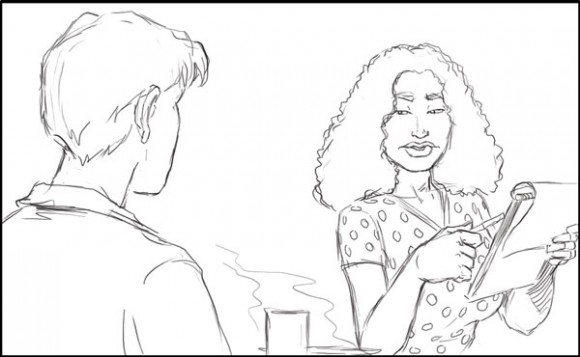
…my first ink lines were clean…

…and unadventurous. So far so good.
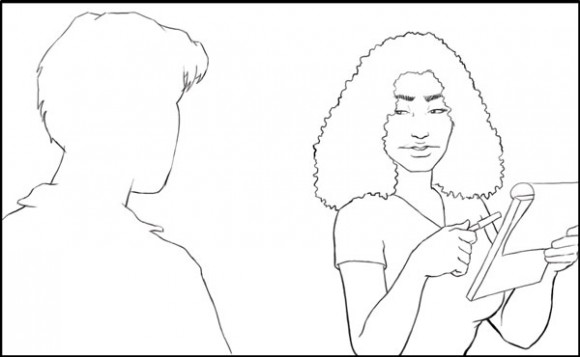
I added blacks to separate foreground from background…

…and thought, “It might be nice to cut some detail into the black areas with an eraser tool”…
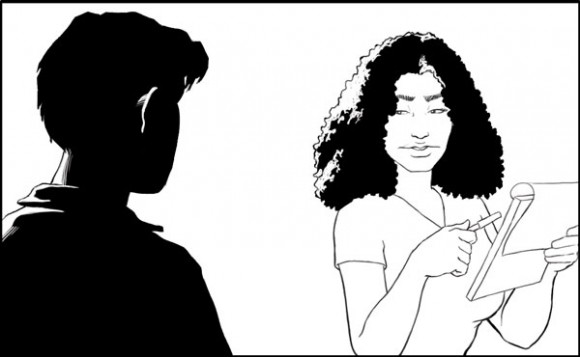
…Hmmm. That’s fun. Sorta like scratchboard. Now maybe I’ll add a bit of local texture and some shading on the figures…

…ah, what the hell? May as well put some shading in the background.
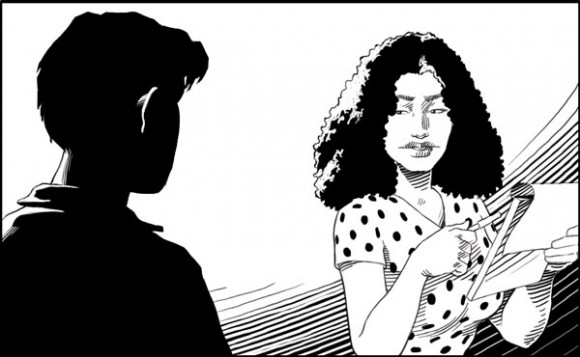
Now I’ve managed to complicate it. This work flow quickly led me to creating panels like this:
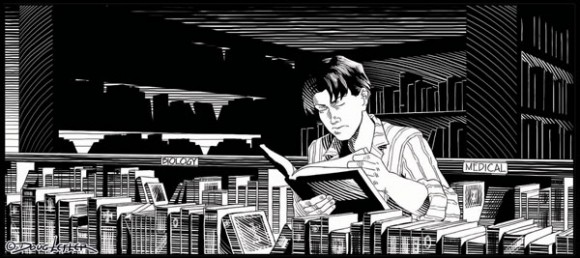
I remember hearing someone say it takes two people to paint a picture: the artist holding the paint brush, and someone standing next to him with a stick to make him stop when the painting was finished.
Here is a shelf on my bookcase with some (but not all) of my favorite drawing books:
Featured here are the Famous Artists drawing course, Composing Pictures by Donald Graham, All of Andrew Loomis’ published books, both volumes of Walt Stanchfield’s Drawn to Life, most of George Bridgman’s books, and very old and battered copy of The Art of Animal Drawing by Ken Hultgren, Animal Drawing by Charles Knight, three books by Jack Hamm, Stephen Peck’s Atlas of Human Anatomy for the Artist, Anatomy A Complete Guide for Artists by Joseph Sheppard, An Atlas of Anatomy for Artists by Fritz Schider, Dynamic Figure Drawing by Burne Hogarth, The Vilppu Drawing Manual, The Big Book of Drawing by J.M. Parronmón, Rendering in Pen and Ink by Arthur Guptill and How to Draw Trees by Henry C. Pitz.
A SERIOUS SUBJECT.
I wonder if anyone following this Journal knows whether there has been a scientific investigation to prove something ice cream enthusiasts have long held to be fact? To wit: ice cream eaten directly from the carton tastes better than ice cream eaten out of a bowl.
When my wife was my girlfriend, and the time came to meet the family, it was also time to introduce her to our desert ritual. After the dinner table was cleared, my father took several cartons of Häagen-Dazs from the freezer and we passed around spoons. The look of alarm on Lynn’s face made me think our relationship had gone as far as it would. This type of barbarism wasn’t tolerated in her household. But to avoid being rude, she picked up a spoon and reached for the Cookies & Cream. It was closest. After one bite, there was no turning back. Next came Rocky Road, followed by Coffee and Vanilla Swiss Almond.
It is the belief of the Lefler-clan that, despite manufacturer’s claims to the contrary, the lids of ice cream cartons are not reusable. For this reason the pint containers are preferable if you’re dining alone. Quart size if you have a friend with you, but don’t break out the gallon cartons unless there are enough people at the table to get the job done. Letting uneaten ice cream melt would be sacrilege.
I’m happy to report that Lynn and I are still together and still eating ice cream the way it’s supposed to be eaten. But on a sad note: The carton of Chunky Monkey that modeled for the above drawing is no longer with us.